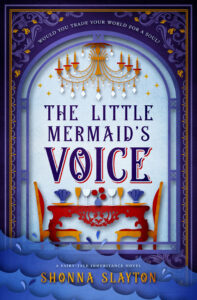For the A to Z blogging challenge I’ve decided to blog about the 1940′s. And in the spirit of the 1940′s, at the end of the month, I’ll be giving away an ebook copy of one of my favorite books, Summer at Tiffany, to one of my newsletter subscribers (sign-up on the sidebar if you are so inclined.) It’s a light-hearted memoir of two college girls let loose in New York City for a summer. What a hoot.

World War II opened up numerous opportunities for women in the work force. Even jobs that I didn’t know were once male-dominated, for example: department store window dressing.
Jan Whitaker in her book Service and Style: How the American Department Store Fashioned the Middle Class writes:
“Until the personnel shortage of World War II, department store window display staff were all male.”
I had never heard of this before, and it brought up all kinds of images in my mind. Why were display staff all male? When I was a teenager, I got to help put in window displays and it was a lot of fun. (My gut told me there was a story there…hence my 1940’s YA novel Cinderella’s Dress where my main character wants to be a window dresser!)
The reasons I found for the lack of women in department store window dressing: the job was physically demanding, it took place over night, and in cramped spaces shared with men, and, at least in New York during the early 40s, women could only work until 10:00pm.)
“Display work was primarily a nocturnal and thus all-male activity. Not by choice. It was then a common belief that window trimming was too physically demanding for women, and according to a New York State law of that period, females were not permitted to work past ten o’clock at night. I had only three women on my staff, and they had to depart long before the window-dressing hours arrived.” -Gene Moore, My Time at Tiffany’s
Earlier in the A to Z challenge I wrote about Gene Moore, a window display artist. He writes about women gaining a foothold in this field during the war years, starting with the big department stores. He also talks about the lighting restrictions such as no spotlights allowed, and the windows had to be covered with blackout curtains. They often included bond drives and Red Cross appeals in their windows.
Another interesting fact I learned was that in France, store windows were kept up even thought the stores themselves might be nearly empty. A way for the occupying forces to keep up appearances as it were.
I haven’t found a good video about window dressing in the 1940’s yet, but I thought this one was interesting. Around the three minute mark starts the footage of shop-keeping during the Blitz.






This is such an interesting topic! We had a lady window dresser in our family working in London during this period. Sharing! 🙂